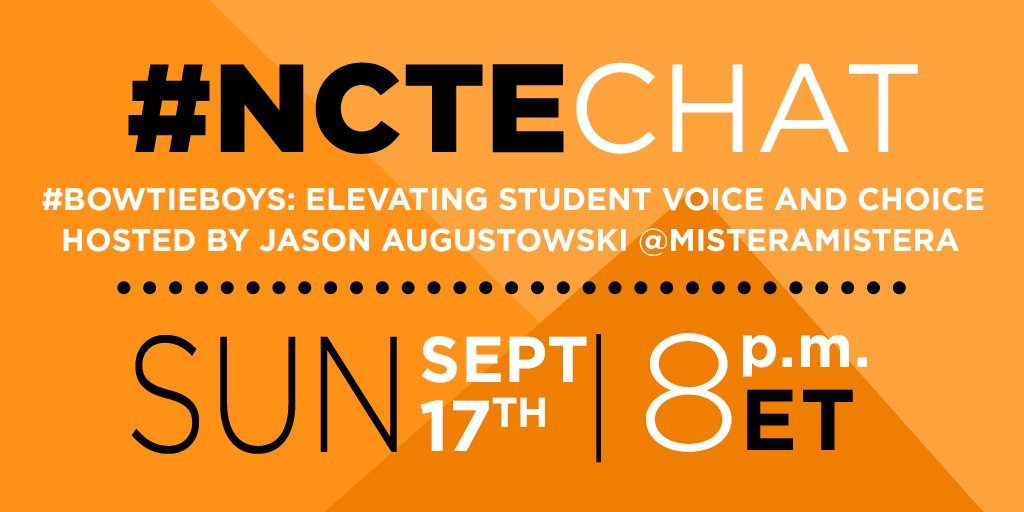This Sunday, September 17, is Constitution Day, the commemoration of the signing of the U.S. Constitution on September 17, 1787.
What a day to celebrate the privileges of the First Amendment, including student voice and choice!
The #Bowtie Boys with Jason Augustowski give voice on on the importance of middle school in this Voices from the Middle article (pp. 14-16; 5-7 .pdf pages).
Listen as the #BowtieBoys give voice to their understandings of Dead Poets Society.
https://www.youtube.com/watch?v=eLS4abk8TiA
Research says [about student choice]:
Engaged adolescents demonstrate internal motivation, self efficacy, and a desire for mastery. Providing student choice and responsive classroom environments with connections to “real life” experiences helps adolescents build confidence and stay engaged. (Guthrie, J. T. (2001). Contexts for engagement and motivation in reading. Reading Online. International Reading Association. Retrieved June 23, 2007, from http://www.readingonline.org/articles/handbook/guthrie/ index.html and Guthrie, J.T., & Humenick, N.M. (2004). Motivating students to read: Evidence for classroom practices that increase reading motivation and achievement. In P. McCardle and V. Chhabra (Eds.), The voice of evidence in reading research.Baltimore, MD: Brookes, 329-54.)…
• Self-selection and variety engage students by enabling ownership in literacy activities.
• In adolescence, book selection options increase dramatically, and successful readers need to learn to choose texts they enjoy. If they can’t identify pleasurable books, adolescents often lose interest in reading.
• Allowing student choice in writing tasks and genres can improve motivation. At the same time, writing choice must be balanced with a recognition that adolescents also need to learn the literacy practices that will support academic success.
• Choice should be meaningful. Reading materials should be appropriate and should speak to adolescents’ diverse interests and varying abilities.
• Student-chosen tasks must be supported with appropriate instructional support or scaffolding. (Biancarosa, G., & Snow, C. (2004). Reading next: A vision for action and research in middle and high school literacy. Report to Carnegie Corporation of New York. Washington, DC: Alliance for Excellent Education. Retrieved June 25, 2007 from http://www.all4ed.org/publications/ ReadingNext/ReadingNext.pdf and Guthrie, J. T. (2001). Oldfather, P. (1994). When students do not feel motivated for literacy learning: How a responsive classroom culture helps. College Park, MD: University of Maryland, National Reading Research Center. Retrieved June 25, 2007, from http://curry.edschool.virginia.edu/go/clic/nrrc/ rspon_r8.html; NCREL (2005).)
Two NCTE members demonstrate what support and scaffolding look like and why choice and voice are so important.
Katie Dredger notes, “Students can succeed when we allow them to choose the courses they take, the texts they read, the processes of their growth, and the products of their achievements.”
Tom Romano deftly explains student voice in the context of writing, the vital importance context when considering words used in writing and reading.



